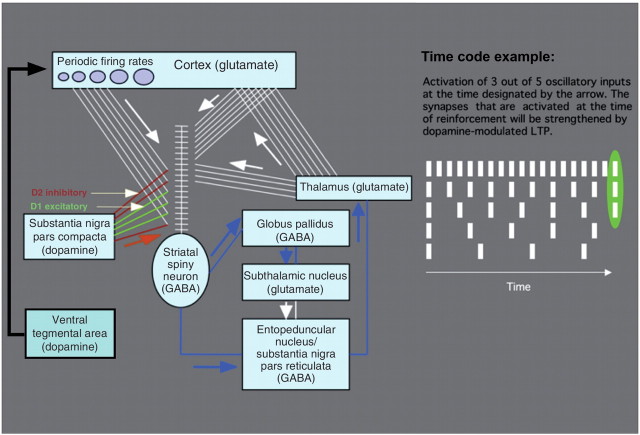Figure 2.
Striatal beat frequency model of interval timing. In this model, intervals are timed via striatal spiny neurons that monitor activation patterns of oscillatory neurons in the cortex. These cortical neurons have patterns of activity that fire with different frequencies and converge onto spiny neurons, as illustrated. At the beginning of an interval, these oscillating neurons are synchronized and the status level of the spiny neurons reset by phasic dopaminergic input from the ventral tegmental area and substantia nigra pars compacta, respectively. The delivery of reinforcement at the target duration produces a pulse of dopamine thereby strengthening the synapses in the striatum that are activated as a result of the beat frequency pattern of these cortical neurons at that specific point in time. In this manner, mechanisms of long-term potentiation (LTP) and long-term depression are used to strengthen and weaken synaptic weights in order to produce a record in memory of the target duration. Later, when the same signal duration is timed again, neostriatal GABAergic spiny neurons compare the current pattern of activation of these cortical neurons with the pattern stored in memory in order to determine when the target duration has been reached. When the clock and memory patterns match as determined by coincidence detection, the spiny neurons fire to indicate that the interval has elapsed. In this model, clock speed is determined by the levels of tonic dopamine–glutamate activity in ventral tegmental area–cortical pathways, which modulates the frequency of cortical oscillations (Cheng et al., 2006, 2007a, b, c). Adapted from Matell and Meck (2004).

